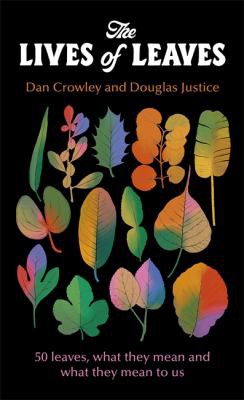Andrew Spink reviewed Lives of Leaves by Dan Crowley
Review of 'Lives of Leaves' on 'Goodreads'
5 stars
If you are interested in plants, specifically trees, then this is a superb and fascinating book. It is not one to sit down and read on one go, but a reading a handful of chapters before going to sleep in the evening is great. It is packed full of intriguing facts. I was amazed to read that monkey puzzle leaves can live up to 30 years!
The book works well as an e-book, and the wonderful leaf silhouettes look good on an e-reader. The quote from Kahil Gibrahn ("Trees are poems that write upon the sky") fit well with that. The only thing is that there are quite a few cross-references, cited by page number. Of course, in an e-book that makes no sense, so that was rather lazy of the publisher.
The authors were not afraid to use technical terms, but those are clearly explained and there is also …
If you are interested in plants, specifically trees, then this is a superb and fascinating book. It is not one to sit down and read on one go, but a reading a handful of chapters before going to sleep in the evening is great. It is packed full of intriguing facts. I was amazed to read that monkey puzzle leaves can live up to 30 years!
The book works well as an e-book, and the wonderful leaf silhouettes look good on an e-reader. The quote from Kahil Gibrahn ("Trees are poems that write upon the sky") fit well with that. The only thing is that there are quite a few cross-references, cited by page number. Of course, in an e-book that makes no sense, so that was rather lazy of the publisher.
The authors were not afraid to use technical terms, but those are clearly explained and there is also a glossary at the back. The glossary is a bit short, terms like 'lenticel' are not there, and I'm sure not everyone knows what that is. Lenticel is explained on first use ("sites of gas exchange - which are long and narrow") but a book like this is clearly designed to be dipped into, so the reader can come across it first in a later chapter.
I found one strange statement. They claim that the tulip tree is called that because of the shape of the flowers. Surely not? A) The flowers are not really tulip shaped, and B) The leaves are very tulip shaped. They mix metric and imperial units, which is a bit quaint and I can imagine bewildering for an international audience.
All in all, a wonderful book, I thoroughly recommend it to anyone with even a passing interest in trees or other plants.

